#philippine colonial architecture
Explore tagged Tumblr posts
Text
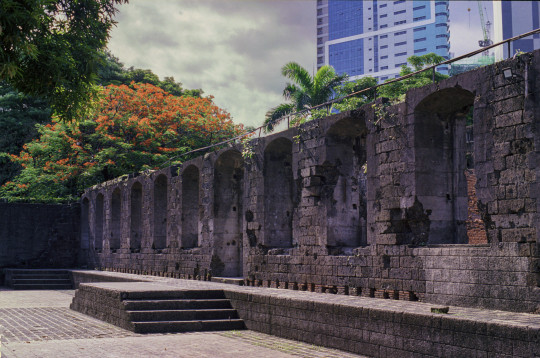



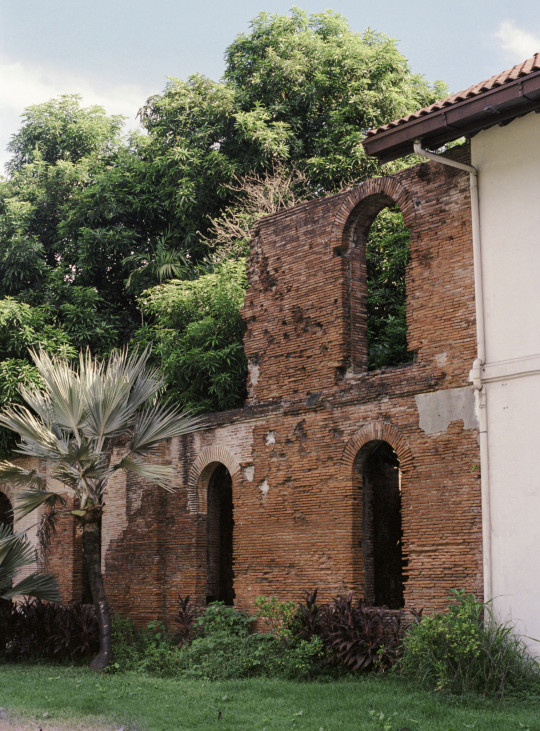

Ruins of the past (2) (3) (4) (5) (6) by _Tursiops
Via Flickr:
(1) Remains of the old prison at Fort Santiago overshadowed by the city towers. Manila, Philippines. (2) Decorative ironwork atop an old doorway at Fort Santiago, Intramuros. (3) The old moat and adobe walls of Fort Santiago are overlooked by the encroaching city tower blocks.
33 notes
·
View notes
Text
the thing about being from a place whose written history only began with colonialism is that it's like. i know you. i love you. you're in my very bones. but at the same time: who are you? who are you? who are you?
#route66.txt#this is the difference btwn my filipino ancestry and indian ancestry#bc there's lots of rich documented indian history in writing & architecture & religion & food even if the british stole a fuckton of it#but the philippines is like. literally what was going on!!!!!! what was happening!!! tell me#but unearthing pre-colonial filipino history is essentially an archeological event
19 notes
·
View notes
Text
On May 28, 1914, the Institut für Schiffs-und Tropenkrankheiten (Institute for Maritime and Tropical Diseases, ISTK) in Hamburg began operations in a complex of new brick buildings on the bank of the Elb. The buildings were designed by Fritz Schumacher, who had become the Head of Hamburg’s building department (Leiter des Hochbauamtes) in 1909 after a “flood of architectural projects” accumulated following the industrialization of the harbor in the 1880s and the “new housing and working conditions” that followed. The ISTK was one of these projects, connected to the port by its [...] mission: to research and heal tropical illnesses; [...] to support the Hamburg Port [...]; and to support endeavors of the German Empire overseas.
First established in 1900 by Bernhard Nocht, chief of the Port Medical Service, the ISTK originally operated out of an existing building, but by 1909, when the Hamburg Colonial Institute became its parent organization (and Schumacher was hired by the Hamburg Senate), the operations of the ISTK had outgrown [...]. [I]ts commission by the city was an opportunity for Schumacher to show how he could contribute to guiding the city’s economic and architectural growth in tandem, and for Nocht, an opportunity to establish an unprecedented spatial paradigm for the field of Tropical Medicine that anchored the new frontier of science in the German Empire. [...]
[There was a] shared drive to contribute to the [...] wealth of Hamburg within the context of its expanding global network [...]. [E]ach discipline [...] architecture and medicine were participating in a shared [...] discursive operation. [...]
---
The brick used on the ISTK façades was key to Schumacher’s larger Städtebau plan for Hamburg, which envisioned the city as a vehicle for a “harmonious” synthesis between aesthetics and economy. [...] For Schumacher, brick [was significantly preferable] [...]. Used by [...] Hamburg architects [over the past few decades], who acquired their penchant for neo-gothic brickwork at the Hanover school, brick had both a historical presence and aesthetic pedigree in Hamburg [...]. [T]his material had already been used in Die Speicherstadt, a warehouse district in Hamburg where unequal social conditions had only grown more exacerbated [...]. Die Speicherstadt was constructed in three phases [beginning] in 1883 [...]. By serving the port, the warehouses facilitated the expansion and security of Hamburg’s wealth. [...] Yet the collective profits accrued to the city by these buildings [...] did not increase economic prosperity and social equity for all. [...] [A] residential area for harbor workers was demolished to make way for the warehouses. After the contract for the port expansion was negotiated in 1881, over 20,000 people were pushed out of their homes and into adjacent areas of the city, which soon became overcrowded [...]. In turn, these [...] areas of the city [...] were the worst hit by the Hamburg cholera epidemic of 1892, the most devastating in Europe that year. The 1892 cholera epidemic [...] articulated the growing inability of the Hamburg Senate, comprising the city’s elite, to manage class relationships [...] [in such] a city that was explicitly run by and for the merchant class [...].
In Hamburg, the response to such an ugly disease of the masses was the enforcement of quarantine methods that pushed the working class into the suburbs, isolated immigrants on an island, and separated the sick according to racial identity.
In partnership with the German Empire, Hamburg established new hygiene institutions in the city, including the Port Medical Service (a progenitor of the ISTK). [...] [T]he discourse of [creating the school for tropical medicine] centered around city building and nation building, brick by brick, mark by mark.
---
Just as the exterior condition of the building was, for Schumacher, part of a much larger plan for the city, the program of the building and its interior were part of the German Empire and Tropical Medicine’s much larger interest in controlling the health and wealth of its nation and colonies. [...]
Yet the establishment of the ISTK marked a critical shift in medical thinking [...]. And while the ISTK was not the only institution in Europe to form around the conception and perceived threat of tropical diseases, it was the first to build a facility specifically to support their “exploration and combat” in lockstep, as Nocht described it.
The field of Tropical Medicine had been established in Germany by the very same journal Nocht published his overview of the ISTK. The Archiv für Schiffs- und Tropen-Hygiene unter besonderer Berücksichtigung der Pathologie und Therapie was first published in 1897, the same year that the German Empire claimed Kiaochow (northeast China) and about two years after it claimed Southwest Africa (Namibia), Cameroon, Togo, East Africa (Tanzania, Burundi, Rwanda), New Guinea (today the northern part of Papua New Guinea), and the Marshall Islands; two years later, it would also claim the Caroline Islands, Palau, Mariana Islands (today Micronesia), and Samoa (today Western Samoa).
---
The inaugural journal [...] marked a paradigm shift [...]. In his opening letter, the editor stated that the aim of Tropical Medicine is to “provide the white race with a home in the tropics.” [...]
As part of the institute’s agenda to support the expansion of the Empire through teaching and development [...], members of the ISTK contributed to the Deutsches Kolonial Lexikon, a three-volume series completed in 1914 (in the same year as the new ISTK buildings) and published in 1920. The three volumes contained maps of the colonies coded to show the areas that were considered “healthy” for Europeans, along with recommended building guidelines for hospitals in the tropics. [...] "Natives" were given separate facilities [...]. The hospital at the ISTK was similarly divided according to identity. An essentializing belief in “intrinsic factors” determined by skin color, constitutive to Tropical Medicine, materialized in the building’s circulation. Potential patients were assessed in the main building to determine their next destination in the hospital. A room labeled “Farbige” (colored) - visible in both Nocht and Schumacher’s publications - shows that the hospital segregated people of color from whites. [...]
---
Despite belonging to two different disciplines [medicine and architecture], both Nocht and Schumacher’s publications articulate an understanding of health [...] that is linked to concepts of identity separating white upper-class German Europeans from others. [In] Hamburg [...] recent growth of the shipping industry and overt engagement of the German Empire in colonialism brought even more distant global connections to its port. For Schumacher, Hamburg’s presence in a global network meant it needed to strengthen its local identity and economy [by purposefully seeking to showcase "traditional" northern German neo-gothic brickwork while elevating local brick industry] lest it grow too far from its roots. In the case of Tropical Medicine at the ISTK, the “tropics” seemed to act as a foil for the European identity - a constructed category through which the European identity could redescribe itself by exclusion [...].
What it meant to be sick or healthy was taken up by both medicine and architecture - [...] neither in a vacuum.
---
All text above by: Carrie Bly. "Mediums of Medicine: The Institute for Maritime and Tropical Diseases in Hamburg". Sick Architecture series published by e-flux Architecture. November 2020. [Bold emphasis and some paragraph breaks/contractions added by me. Text within brackets added by me for clarity. Presented here for commentary, teaching, criticism purposes.]
#abolition#ecology#sorry i know its long ive been looking at this in my drafts for a long long time trying to condense#but its such a rich comparison that i didnt wanna lessen the impact of blys work here#bly in 2022 did dissertation defense in architecture history and theory on political economy of steel in US in 20s and 30#add this to our conversations about brazilian eugenics in 1930s explicitly conflating hygiene modernist architecture and white supremacy#and british tropical medicine establishment in colonial india#and US sanitation and antimosquito campaigns in 1910s panama using jim crow laws and segregation and forcibly testing local women#see chakrabartis work on tropical medicine and empire in south asia and fahim amirs cloudy swords#and greg mitmans work on connections between#US tropical medicine schools and fruit plantations in central america and US military occupation of philippines and rubber in west africa#multispecies#imperial#indigenous#colonial#landscape#temporal#see also us mosquito campaigns in panama and british urban planning in west africa and rohan deb roy work on india bengal entomology#ecologies#bugs#tidalectics#archipelagic thinking#plantations#intimacies of four continents#carceral geography#black methodologies#indigenous pedagogies
14 notes
·
View notes
Text


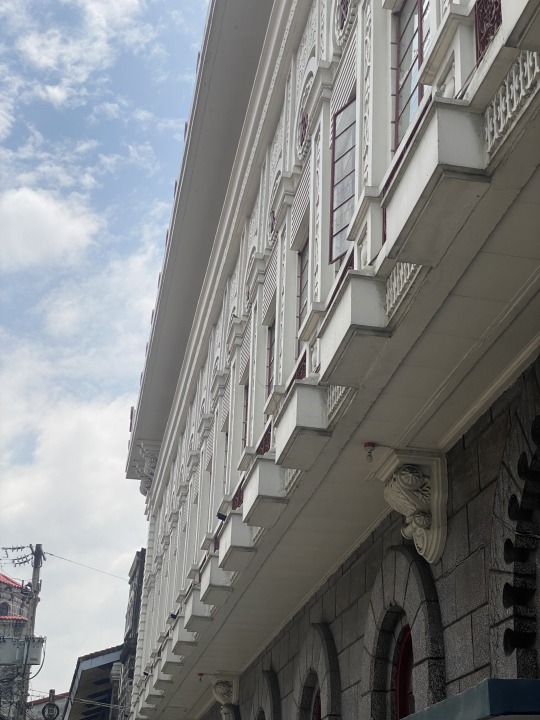


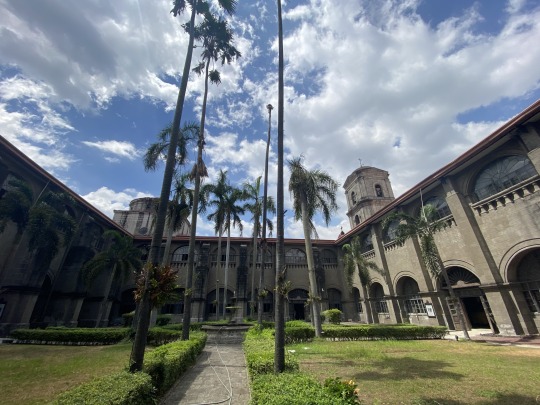

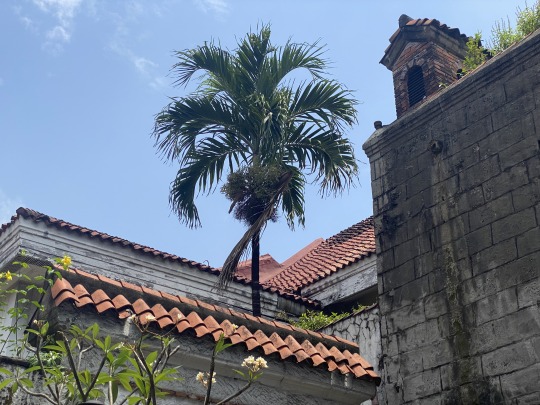

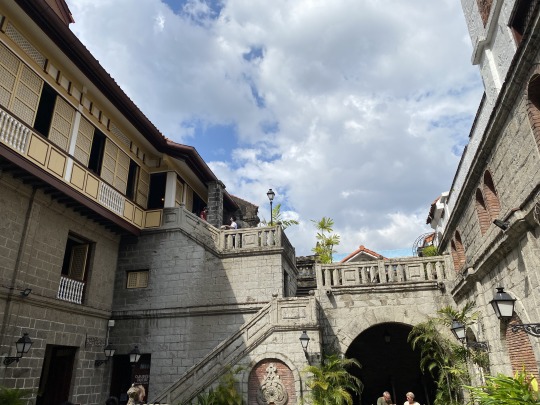

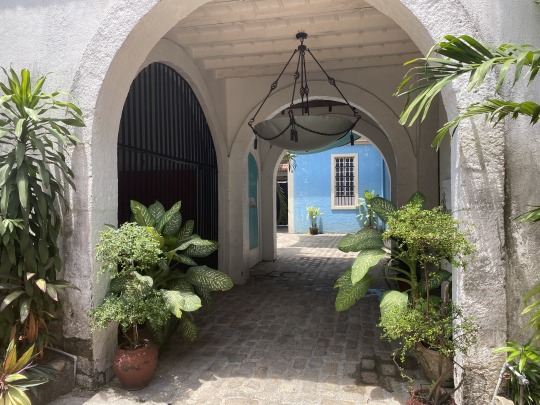
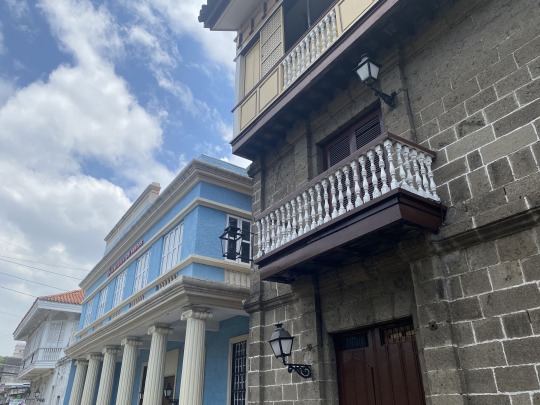
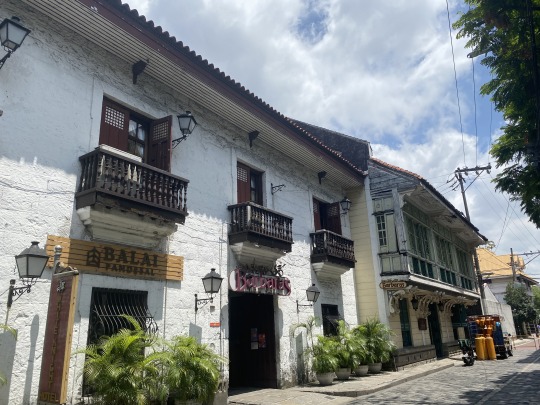
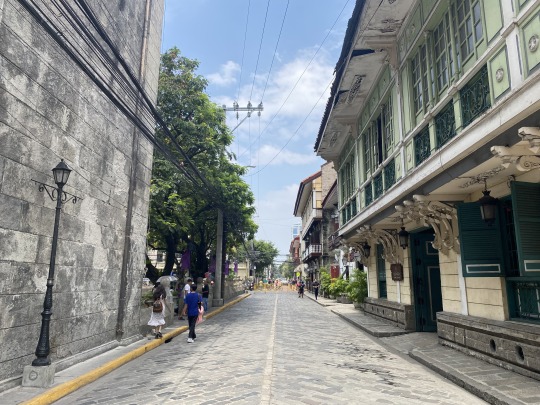
City Shots 6 (2024)
One of my long overdue personal trips was one I spent in the Old City. I've made plans to visit the place before but due to unexpected upheavals (with me moving last year and all), it took until Lent 2024 for me to actually do so. If you haven't been following me, I have a longstanding interest in historic Philippine architecture which had its roots nearly 10 years ago when I started building colonial-themed houses in the Sims 3.
My trip was, like the one in 2022 before it, made during Lent. Unlike in 2022, however, I traveled alone, which gave me plenty of opportunities to explore Plaza San Luis and its neighbors.
I only had time to explore the area around Plaza San Luis and three of its museums (only two of which I elected to share). Inasmuch as I would want to take pictures of the rest of the city's museums (including the ones situated at Fort Santiago) and the other structures around the district, I ran out of time and energy due to how mercilessly hot the day was.
Like with my previous post, more information is shown under the cut.
Camera: iPhone 11
Date: 26 March 2024
Location: Plaza San Luis Complex, Intramuros, Manila, Philippines
Usage: By request. Noncommercial only.
The Old City of Intramuros (meaning "Within the Walls") was the nucleus of modern Manila, built over the flattened remains of the fortress city-state encountered by the conquistador Miguel Lopez de Legaspi in 1570. The city was the crown jewel of the Spanish Philippines and was once the home of the city's elite. Today, the city's residents comprise mostly of students and informal settlers, with the majority of people being tourists and the people who work in the businesses supporting the tourism industry.
Many of the sites in the city are in various states of ruin and restoration, very few of which besides the walls being the original structures at all. Most of the buildings in the city (including the entirety of Plaza San Luis) consist of reconstructed replicas. The Casa Manila Museum (the large yellow structure) isn't even based on a structure from the Old City but is a rebuilt building from a different district altogether.
The only building from the era that survived to be restored is San Agustin Church, the oldest surviving colonial stone structure in the country. Much of the Old City was destroyed toward the end of World War II.
#photography#city shots#urban#cityscapes#architecture#buildings#trees#colonial philippines#urban photography#church#museum#Manila#Intramuros
8 notes
·
View notes
Text
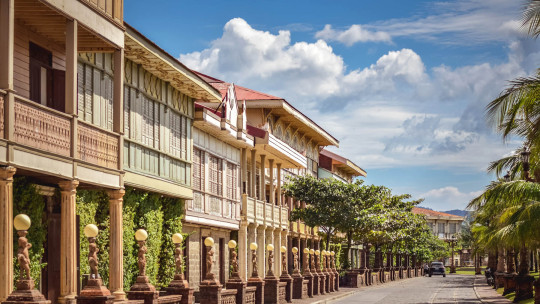
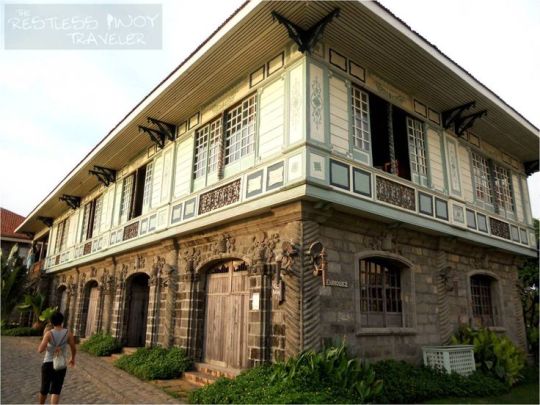
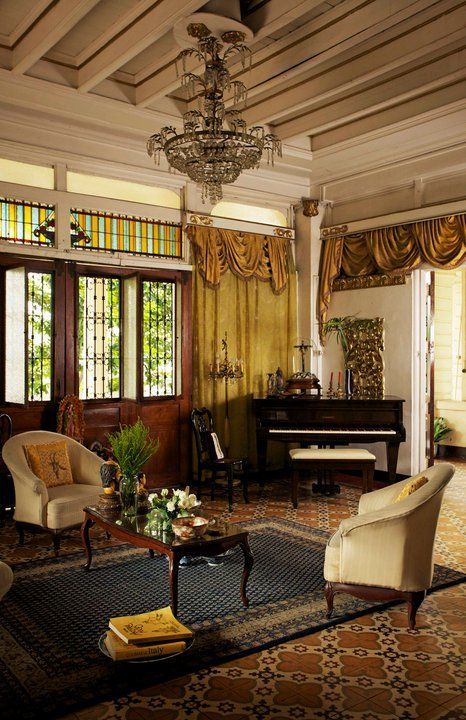
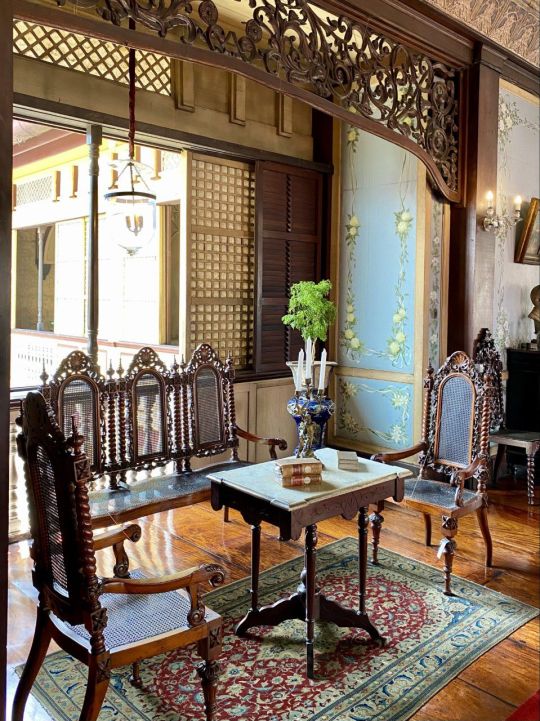
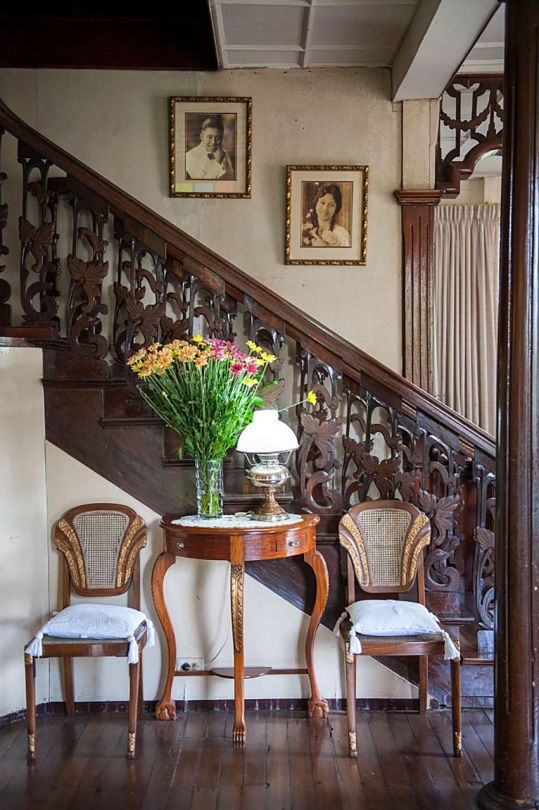
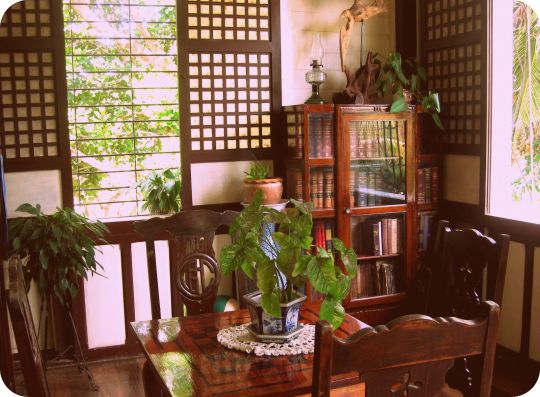

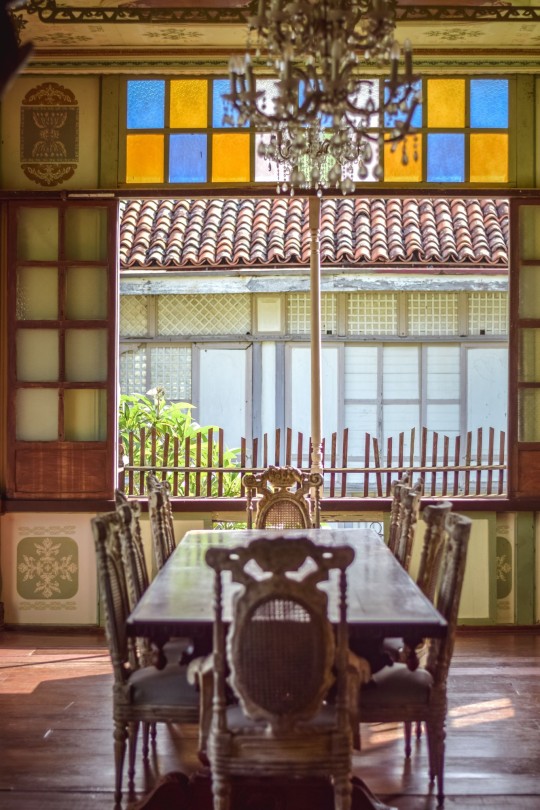

"You smell like the sun," my mother would say to me when I was a child playing on a balmy summer day. But how can a person smell like the sun? The sun is far away and did not emit a smell. As I grew, I could understand. I could smell the sun. The warmth catching on my skin and hair, the humidity covering me from head to toes. My people smell of the sun. The bringer of light and life. We thrive and celebrate in the sun's golden rays as it blesses our skin with a golden hue.
•
•
•
•
•
•
•
•
•
Thinking of summers in the homeland. Our traditional architecture brings me so much warmth. Built to withstand the heat and rain. I hope to see it soon.
7 notes
·
View notes
Text
Want to see Vigan, Ilocos Sur but don't have the budget? This charming historical town in Taal, Batangas got you! Explore Spanish colonial houses and get to know about the country's unsung heroes in Taal Heritage Town, located just two hours away from Manila!
0 notes
Text
The Quiapo district of Manila is located just outside the walled city of Intramuros. It became a natural extension when the city was expanding during the Spanish colonial times, and it was the address of choice for the well-heeled Filipino mestizo families, especially at Hidalgo Street, where rows of bahay na bato (house of stone) competed against each other in terms of grandeur and size. Many of these houses now lie in various states of decay. But the most prominent one, the century-old Bahay Nakpil-Bautista (Nakpil-Bautista House) still stands.
Built in 1914 by Arcadio Arellano for Dr. Ariston Bautista and his wife Petrona Nakpil, the house sat on two lots with a total area of 500 square meters (5,400 square feet). It's a typical style for its period—two stories, with the lower story serving as the zaguan, or parking area for horse-drawn carriages. The stones on the ground floor came from Mexico, and a few pieces of colorful tiles before the stairs came from Spain.
A short set of stairs leads to an elevated sala (living room), a room that serves as a workshop, and a bedroom. The lower story is made of stone and wood. A main stairway brings you to the second story, where the main hall is located to the right and the kitchen and dining area to the left. On both wings are several rooms for the many inhabitants of the house. Large windows in the living room provide a free-flowing circulation of air throughout the house—there were no air conditioning units at the time this house was built.
Several key figures in Philippine history have lived in the Nakpil-Bautista House. Dr. Ariston Bautista, who commissioned the house, was one of the first professors at the University of the Philippines and also invented a medicine to combat cholera. The legendary Gregoria de Jesus, widow of Andres Bonifacio, who founded the revolutionary armed Kataastaasan Kagalang-galang na Katipunan ng mga Anak ng Bayan (KKK) was a leading figure of the women's arm of the organization. After Bonifacio died, she married the musician Julio Nakpil.
The house survived the Japanese bombing in World War II, which damaged 70 percent of Manila. The Nakpil-Bautista family moved out of the house in the 1960s. It has since been used as a community center, a museum, and a classroom for children from the surrounding area during the COVID-19 pandemic. The museum showcases the history of Quiapo, the Nakpil-Bautista family, and the Philippine Revolution.
The National Historical Commission of the Philippines declared the house a cultural property on August 25, 2011. Besides the historical value of the house, it is worth visiting as a perfect representation of the architectural style prevailing during the Spanish colonial period and the early 19th century.
16 notes
·
View notes
Text
World Tourism Day

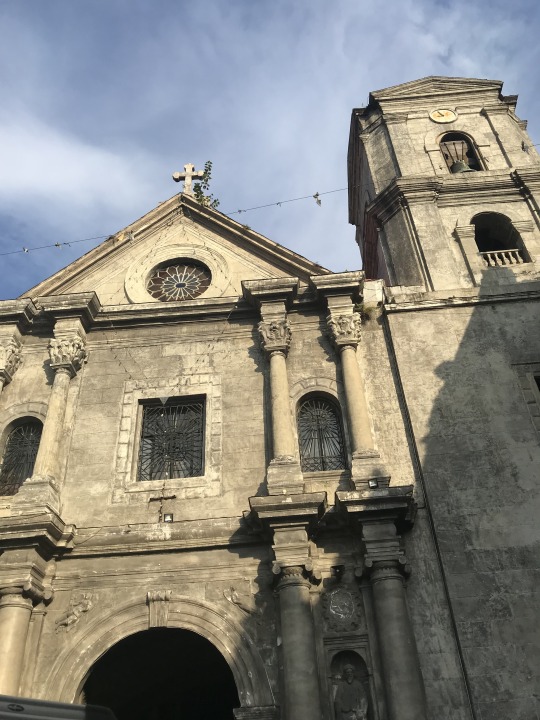
Travel Guide: Manila, Philippines
Manila, the Philippines' vibrant metropolis, is a dynamic mix of old and new, with ancient Spanish architecture meeting modern skyscrapers and busy marketplaces coexisting with elegant retail malls. Whether you're interested in the city's rich history, eclectic cuisine scene, or vibrant culture, Manila provides an intriguing and comprehensive experience.
When to Visit:
The dry season (November-May) offers less humidity and rain, with cooler temperatures from December to February. The wet season (June-October) offers indoor activities like museums and shopping and is less crowded.
Top Attractions:





Intramuros: The historic heart of Manila, built during the Spanish colonial period. Visits include Fort Santiago, San Agustin Church, and Casa Manila Museum.
Rizal Park (Luneta): A sprawling park dedicated to José Rizal, hosting the National Museum Complex.
Binondo, The World's Oldest Chinatown: A vibrant neighborhood known for its Chinese-Filipino culture and delicious food.
Manila Ocean Park: An aquarium and marine-themed park offering a variety of activities.
Cultural Center of the Philippines (CCP): Home to Filipino performing arts, hosting concerts, ballets, plays, and art exhibits.
Local Experiences:
Experience the Philippines' iconic jeepney ride for a colorful and affordable way to explore Manila. The city is a shopping paradise, with luxurious malls like SM Mall of Asia and bargain hunting at Divisoria Market and Greenhills Shopping Center. Enjoy local crafts, electronics, and clothes at these popular shopping destinations.
Food & Dining:



Manila is a hub of Filipino flavors, offering a diverse range of street vendors and fine dining options. Famous dishes include lechon, a traditional pig dish; adobo, a soy-braised chicken or pork dish; and halo-halo, a refreshing dessert made with shaved ice, sweetened fruits, jelly, ube, and leche flan.
Must-Try Restaurants:



Ilustrado Restaurant in Intramuros offers a blend of Spanish, Filipino, and international cuisine, while Barbara's Heritage Restaurant provides a cultural dining experience with traditional Filipino food and folk dance performances. Aristocrat is renowned for its Filipino comfort food.
Day Trips from Manila:

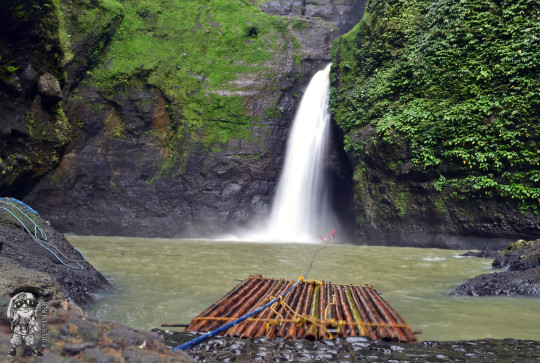

Tagaytay, Pagsanjan Falls, and Corregidor Island: • Tagaytay: 2-hour drive from Manila, offers cooler weather and Taal Volcano views. • Pagsanjan Falls: 3-hour boat ride through river gorge, ending with refreshing waterfall. • Corregidor Island: Historical island off Manila Bay, played a significant role during WWII. Guided tour of ruins, tunnels, and military barracks.
Nightlife:
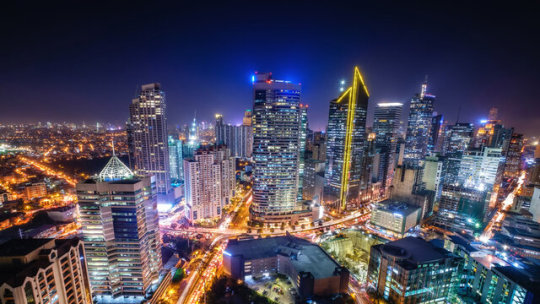
Manila's nightlife scene is vibrant, particularly in Makati, Bonifacio Global City, and Malate. It offers trendy rooftop bars, live music, and dance clubs. Poblacion, known for its hip vibe, features speakeasies, bars, and clubs. Resorts World Manila, a luxury resort and casino, offers sophisticated dining, theaters, and bars for a sophisticated night out.
Getting Around:

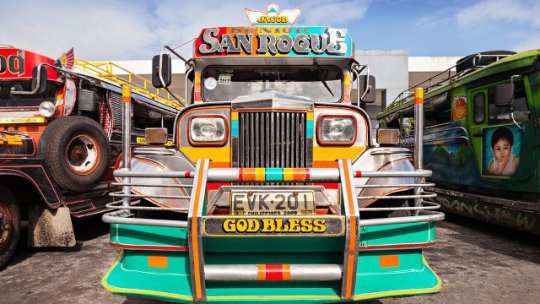

Manila's traffic can be busy, so leave additional time to drive. You can get about using Grab (the taxi service app), jeepneys, buses, or LRT/MRT trains. Local communities also have tricycles and pedicabs accessible for shorter trips.
Cultural Etiquette:

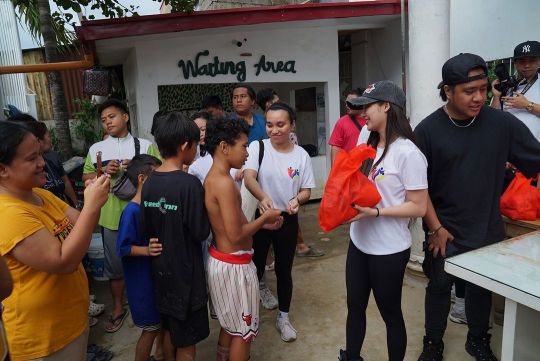
• Mano Po: Traditional respect gesture where younger people place elder's hand on forehead. • Bayanihan Spirit: Filipino hospitality, friendly locals, and helpfulness encouraged.
Shopping:

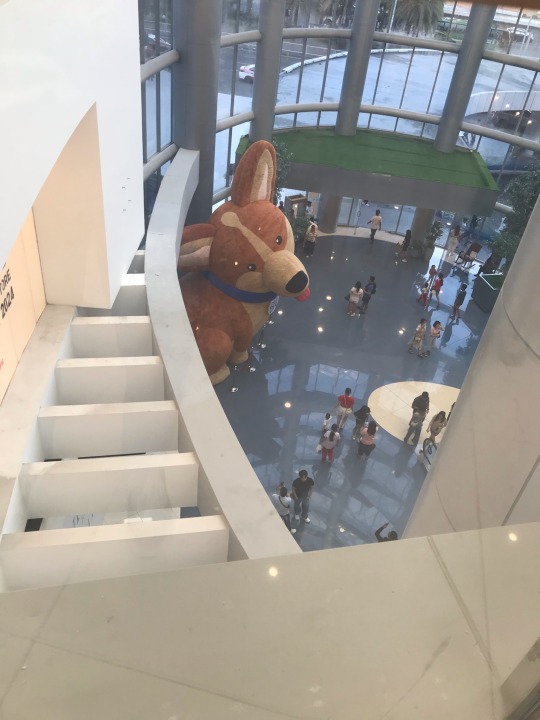
Divisoria is a popular market known for affordable goods, while SM Mall of Asia is a massive mall offering luxury goods, local brands, an ice skating rink, and an IMAX theater.
Conclusion:
With its blend of colonial history, vibrant urban life, and ingrained culture, Manila is a city of contrasts. Whether you're taking in the lively culinary scene or discovering the old-world elegance of Intramuros, Manila provides a diverse and colorful experience that will make for lifelong memories.
10 notes
·
View notes
Text
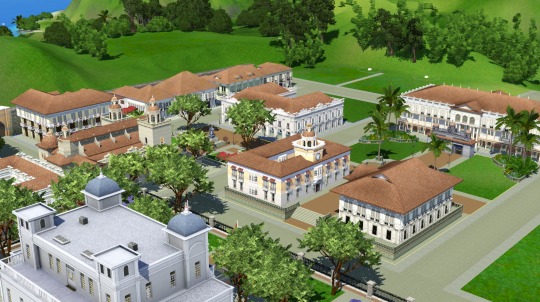
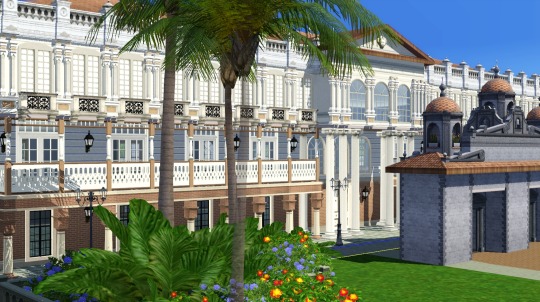
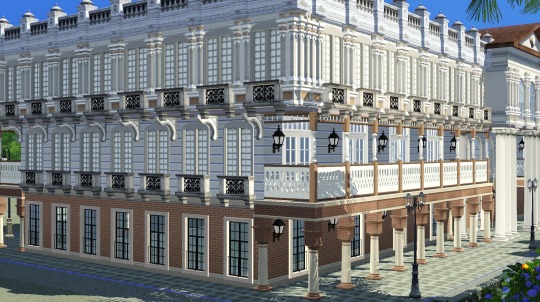
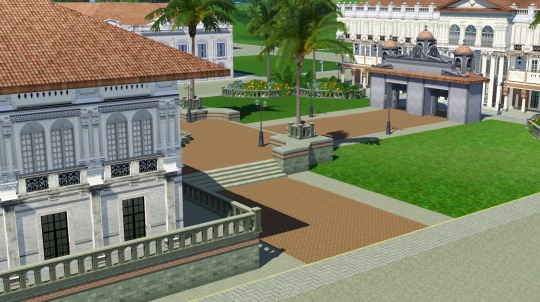
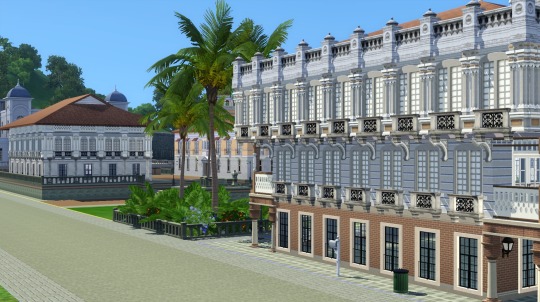
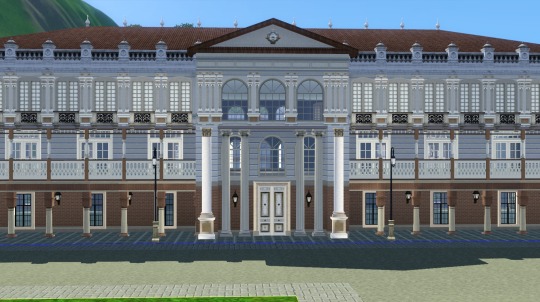
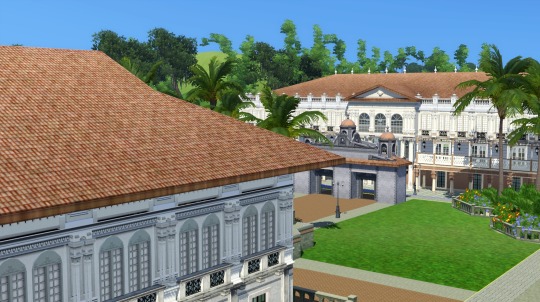
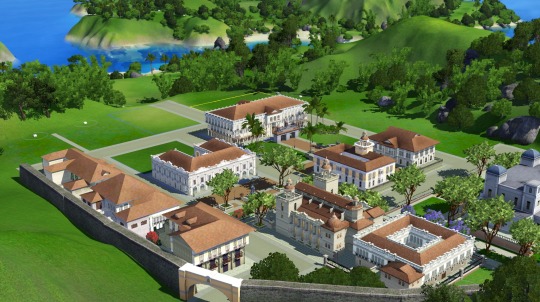
A large luxury hotel built smack dab in the middle of the plaza. Still not sure what to make of it yet, as it could either be a swanky deluxe dormitory, a luxury lounge, a rabbit hole of some sort, or even a resort (where does the large pool go, though?). It's based on a combination of buildings (real world hotels at the Las Casas Filipinas resort and living history museum), one a combination of hotels styled after a historic accesoria and the reconstructed Hotel de Oriente, which used to stand in what is now Plaza San Lorenzo in Binondo.
One of my tentative names for it is the Hotel McCarric, indicative of the owners of the hotel and a deliberate shout-out to @danjaley's McCarric Scenes. I floated up the possibility of having that family in the save a while back. The McCarric family I've planned for this save was one of those merchants who made it big here and decided to invest on a large venture in the walled city. They're likely very distant relatives or descendants of those McCarrics, having made their fortune as traders in hemp rope and sugar.
Historically, this is actually very plausible, as the British had a sizeable presence in Philippine cities as entrepreneurs.
Anyway, about that arch. Should I keep it in place or reconstruct it in front of Fort St. Simeon instead?
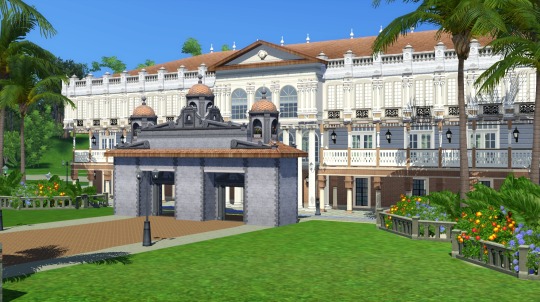
61 notes
·
View notes
Note
Hello!
I hope you're doing well. I am very lucky to have stumbled across your blog. I am currently working on my dissertation which is about the Spanish colonisation of the archipelago of the Philippines till, particularly, 1700. I am focusing on the cultural impact that colonisation had in terms of art, architecture, music, theatre, language and literature. Could you share any academic articles or publications that I could make use of?
Thank you!
the first thing that comes to mind is clothing the colony by stephanie coo. unfortunately, it focuses on the century after your point of interest however the early chapters do lay down some relevant background information and context leading up to the thesis of the book which is about sartorial culture in spanish philippines.
another thing that might interest you in terms of women’s history in particular (and is a bit more period appropriate, i.e., before AD 1700) is the flaming womb by barbara andaya. it’s about trends and societal shifts throughout the broad southeast asian region from the early modern era and beyond but there are some bits there that pertain to the philippines, women in religion, and christianity that might interest you.
another is the myth of the lazy native by syed hussein alatas. the subtitle - “A study of the image of the Malays, Filipinos and Javanese from the 16th to the 20th century and its function in the ideology of colonial capitalism” - explains the book very well.
sorry for the not-so exhaustive list. most of my interest in philippine history and cultures are concentrated on mindanao history, prehispanic / classical / early modern eras, and prehistory!
11 notes
·
View notes
Note
Found my essay about south-east asia,,
Sorry if it's not similar to what you are learning bc mine is really different,,
Anyway discord not working rn bc of bad wifi.
So here,,
──────────────────────────────
South-East Asia is a vast region stretching from Myanmar in the west to Papua New Guinea in the east. Home to over 600 million people, it is a diverse and vibrant area with deep cultural and historical roots.
One of the most influential aspects of South-East Asia is its rich and diverse cultures. The region boasts over 300 languages and hundreds of ethnicities, each with their own unique customs, traditions, and beliefs. These diverse cultures are reflected in the region's architecture, food, and arts, creating a richness and depth that is unmatched in any other part of the world.
The region's economy is also diverse, with many countries emphasizing different industries. Singapore, for example, is a major financial hub and one of the world's leading trading centers. Vietnam, on the other hand, is an industrial powerhouse, producing goods such as clothing, shoes, and electronics.
In terms of history, the region has a long and complex past. Countries such as Malaysia, Indonesia, and the Philippines have rich histories dating back to at least the 7th century CE. The region was also conquered by various empires throughout history, including the Chinese, the Japanese, and the European colonial powers. These events have shaped the region's culture and identity in significant ways, creating a unique and resilient people.
One of the most pressing issues in South-East Asia is poverty. Many countries in the region struggle with high poverty rates, with some countries having over 25% of their population living below the poverty line. Additionally, inequality and lack of social mobility are major challenges in many countries, with the elite few holding most of the wealth and power.
In spite of these challenges, South-East Asia continues to be a hub of innovation and economic growth. Countries in the region are investing heavily in education, infrastructure, and technology, with many countries on track to become upper-middle-income countries by 2030.
In conclusion, South-East Asia is a region of unparalleled diversity and complexity, with a rich cultural, historical, and economic legacy. While it faces many challenges, it is a region with great potential for growth and development in the years to come.
Despite the economic and cultural diversity of countries in South-East Asia, the region faces many shared challenges, including poverty, inequality, and environmental degradation. One of the biggest environmental issues facing the region is deforestation and land degradation, which are caused by agricultural practices, logging, and mining. In addition, South-East Asia is particularly vulnerable to natural disasters, including floods, cyclones, and droughts, which can cause great damage to infrastructure and human populations. Climate change is also a major concern in the region, with rising sea levels, increased temperatures, and more frequent extreme weather events.
In terms of human rights, the region has a mixed record. While some countries have made significant progress in protecting and promoting human rights, others have been criticized for human rights abuses, including political repression, discrimination against minorities, and restrictions on freedom of speech and expression.
Despite these challenges, South-East Asia is poised to play an increasingly important role on the global stage. The region's rapidly growing economy and young, educated population make it an attractive destination for investment and trade, while its strategic location in the heart of Asia makes it a critical player in the regional and global geopolitical landscape. South-East Asia is also home to some of the world's most important environmental ecosystems, including the Amazon rainforest and the Coral Triangle, both of which are critical for biodiversity and climate regulation.
In conclusion, South-East Asia is a region of great diversity and potential, with unique cultural and historical traditions, strong economic growth, and a vital role to play in global affairs. While the region faces many challenges, from poverty and inequality to environmental degradation and human rights abuses, it is also a region of opportunity, with the potential to become a major player on the global stage and a beacon of hope for a better future.
──────────────────────────────
Hope this is good enough for you!!
I have like alot of essays about my history lessons bc my teacher told us to write essays alot and i lost count of how much words this is,,

—Sev
“ THANKS POOKS!!! ^^ ”
3 notes
·
View notes
Text
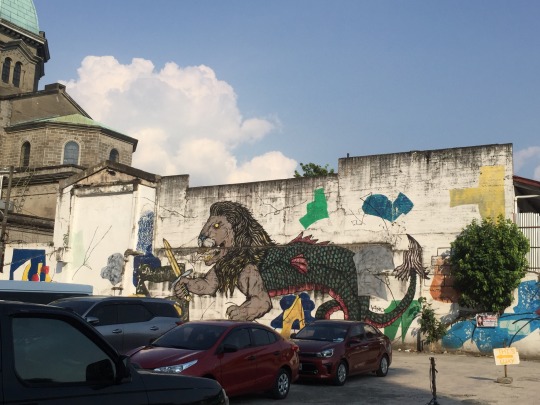
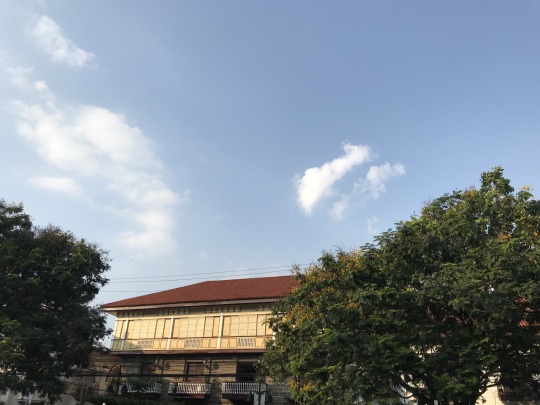
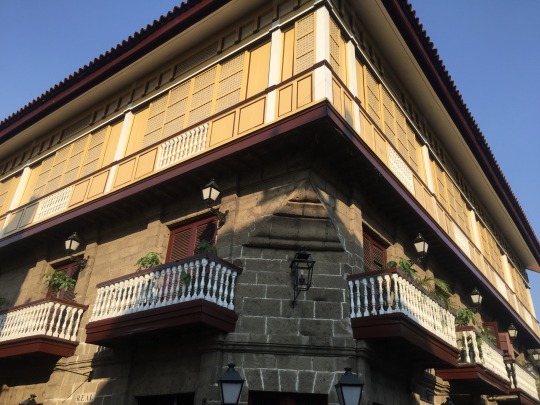
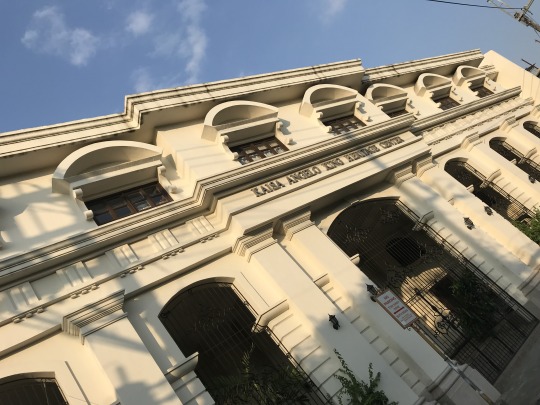

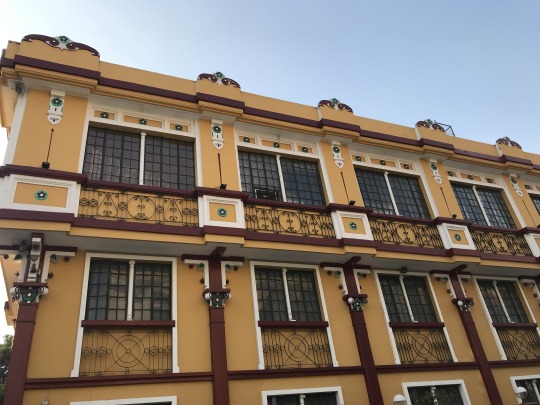

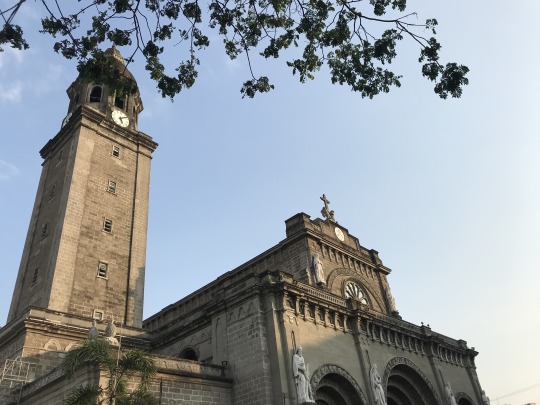

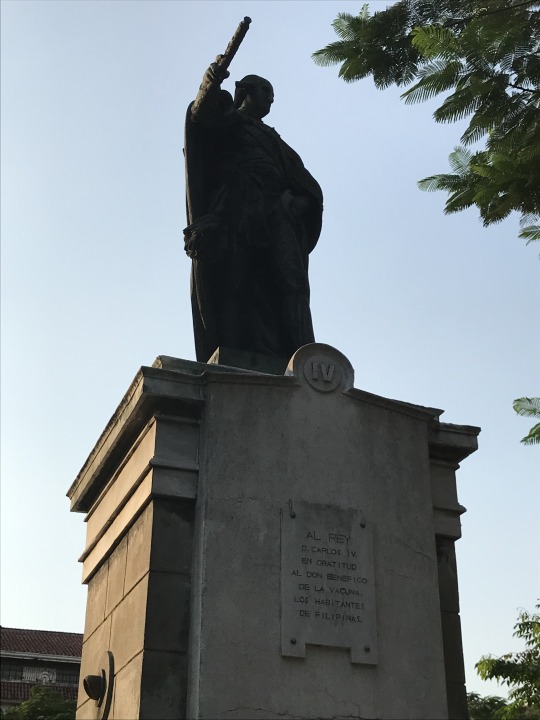
City Shots 5 (2022)
My opportunities to visit heritage sites have been few and far in between, what with recent upheavals and major life milestones coming about. Unlike in the 2010s, where I could make these trips on a whim, things were different in the 2020s. Up until I earned enough to go on trips on my own, I largely traveled with my family, especially during the pandemic. The images taken here were taken during Holy Week, when my father agreed to do our annual Visita Iglesia in the Old City of Intramuros.
The shots were taken using two phones (an older phone was used in some shots as a precautionary measure against thieves). Due to the afternoon heat, my family could only go down one road rather than pray through all the stations scattered in the district. Despite this setback, I had enough time in between prayer to take a modest selection of images of the reconstructed and themed structures of the city.
This is the first of two parts. View the second post here.
Important historic notes (including one about the street art) below the cut!
Camera: iPhone 6 and iPhone 7
Location: Plaza Roma, Luna Street, various side streets, and the Plaza San Luis Complex, Intramuros, Manila, Philippines
Date: 14 April 2022
Usage rights: By request. Noncommercial only.
Only one building complex, the San Agustin Church and convent, truly survived the bombings of World War II. Older historic buildings (including the Manila Cathedral and the Ayuntamiento de Manila) had to be rebuilt. One building, the Casa Manila Museum, was a reconstructed structure from a different district altogether.
Some of the newer buildings were also made to superficially resemble 18th and 19th Century colonial buildings. The district's current administration mandated that all new structures in the city must be in that style to preserve its atmosphere. The result is not quite an authentic historic district but what feels sometimes like a theme park version of one.
Featured in the parking lot street art is Manila's heraldic animal, the "sea lion," a chimerical mix of the front parts of a lion and the tail of a fish (not to be confused with the animal of the same name). The coat of arms of Manila, which included this creature, was first bestowed upon the city by King Philip II on the 20th of March 1596. This is not to be confused with the Singaporean merlion, which is a chimerical beast with the head of a lion and the body of a fish, first used in 1964.
#photography#city shots#urban#urban photography#architecture#buildings#trees#church#colonial philippines#Manila#Intramuros
9 notes
·
View notes
Text








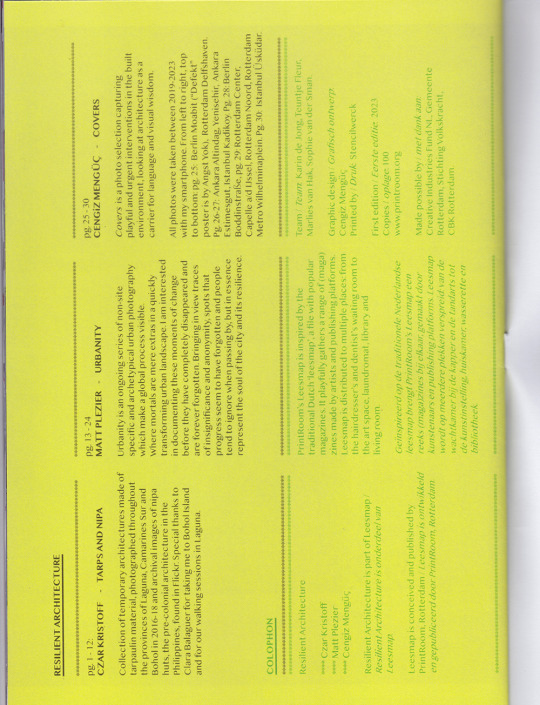

Preview of my contribution for Resilient Architecture (with Cengiz Mengüç and Matt Plezier) inside PrintRoom's Leesmap Vol. I. . Collection of temporary architectures made of tarpaulin material, photographed from 2016-18 in the provinces of Laguna, Camarines Sur and Bohol Island, Philippines alongside with archival images of bahay kubo / nipa huts, the pre-colonial architecture in the Philippines, found on Flickr.
Leesmap is conceived and published by PrintRoom, Rotterdam. Printroom's Leesmap is inspired by the traditional Dutch "leesmap", a file with popular magazines. It playfully gathers a range of (maga)zines made by artists and publishing platforms. Leesmap is distributed in multiple places from the hairdresser's and dentist's waiting room to the art space, laundromat, library and living room.
Designed by Cengiz Mengüç. Printed by Stencilwerck.
#printroom rotterdam#printroom leesmap#leesmap#czar kristoff#resilient architecture#architecture#publishing#artist publisher#cengiz menguc#matt plezier#printroom#archive#nipa hut#bahay kubo#philippines#tarpaulin
7 notes
·
View notes
Text
𝑻𝒐𝒑 𝑴𝒖𝒔𝒕-𝑽𝒊𝒔𝒊𝒕 𝑷𝒍𝒂𝒄𝒆𝒔 𝒊𝒏 𝑪𝒆𝒃𝒖: "𝑨 𝑮𝒖𝒊𝒅𝒆 𝒕𝒐 𝒕𝒉𝒆 𝑸𝒖𝒆𝒆𝒏 𝑪𝒊𝒕𝒚 𝒐𝒇 𝒕𝒉𝒆 𝑺𝒐𝒖𝒕𝒉"
Cebu, known as the "Queen City of the South," is a beautiful island province in the Philippines that captivates visitors with its mix of rich history, stunning beaches, unique festivals, and vibrant urban culture. Whether you’re an adventure seeker, a history enthusiast, or a beach lover, Cebu has something for everyone. Here’s a comprehensive guide to the best places to visit in Cebu, perfect for travelers looking to experience the island’s diverse attractions.
CEBU TAOIST TEMPLE
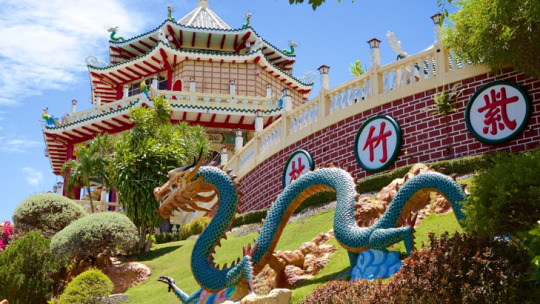
The Cebu Taoist Temple is a beautiful and serene destination located in the hills of Beverly Hills Subdivision in Cebu City. Built in 1972 by Cebu’s Chinese community, the temple stands as a symbol of their deep-rooted heritage and spiritual presence in the region. Unlike most temples in the Philippines, the Cebu Taoist Temple is open to visitors of all faiths, offering a welcoming space for those interested in Taoism or simply looking to experience the temple's tranquil environment.
TEMPLE OF LEAH
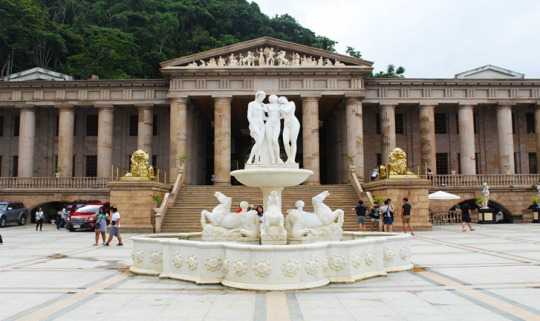
The Temple of Leah is a grand, Greco-Roman-inspired structure located in the hills of Busay, Cebu City. Built in 2012, the temple was commissioned by Teodorico Adarna as a tribute to his late wife, Leah Villa Albino-Adarna, symbolizing his enduring love and devotion to her. Often referred to as "Cebu's Taj Mahal," the temple has since become a popular tourist attraction due to its unique architecture and romantic backstory.
KAWASAN FALLS
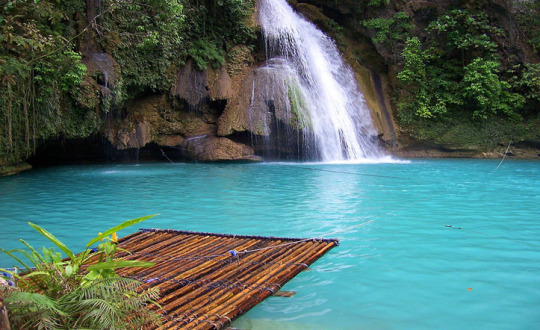
Kawasan Falls is one of Cebu’s most famous natural attractions, located in the lush mountains of Badian, about 130 kilometers south of Cebu City. This stunning waterfall is known for its multi-tiered cascades, with water that appears strikingly turquoise, flowing into natural pools surrounded by lush greenery. The falls consist of three main levels, each with its own scenic pools, and are perfect for swimming, bamboo rafting, and cliff diving.
OSLOB WHALE SHARKS
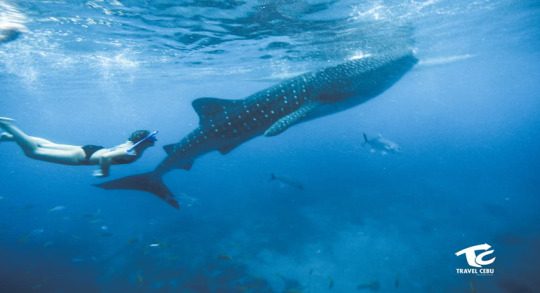
Oslob, a coastal town in southern Cebu, is renowned worldwide for its unique whale shark-watching experience. Visitors from around the globe come to Oslob to swim and snorkel with these gentle giants, known locally as butanding. Whale sharks, the largest fish in the world, are peaceful creatures and feed on plankton, making them safe to observe up close.
Oslob Municipality is known for its old churches and beautiful beaches, but it has become more popular because of the gentle giants the Whale Sharks. Local fishermen would interact with the whale sharks by feeding them, until many tourists began to arrive in Oslob to see the whale sharks being fed. As a result, these tourists snorkeled or dived with the whale sharks. Oslob Whale Shark watching is one of the top bucket lists of tourists who visit Cebu because of the rare experience. Most noteworthy, whenever you have a close encounter with the Whale Sharks, it is not allowed to touch them.
MAGELLAN’S CROSS
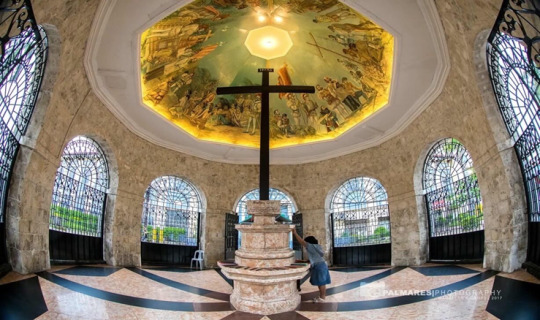
King of Spain Charles 1 chose navigator Ferdinand Magellan to look for the “Spice Islands.” In doing so, Magellan was able to cross the globe and eventually landed in the Philippines in 1521. Specifically, he made his step in Cebu on March 15, 1521.
Magellan’s Cross is one of the most historically significant landmarks in Cebu City and a symbol of the Philippines’ colonial past. Planted by Portuguese explorer Ferdinand Magellan in 1521, the cross commemorates the arrival of Christianity in the Philippines, marking the beginning of Spanish influence in the archipelago. This event is considered a milestone in Philippine history, as it led to widespread conversion and the establishment of Catholicism across the islands.
BASILICA DEL STO. NIÑO
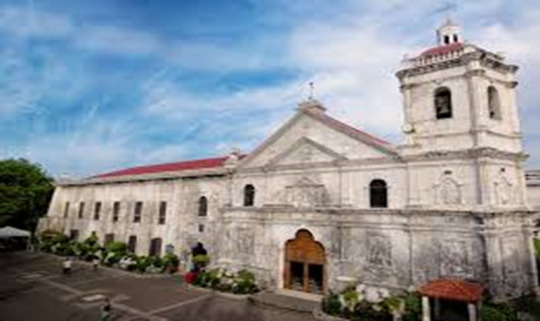
The Basilica Minore del Santo Niño, often simply referred to as the Santo Niño Basilica, is the oldest Roman Catholic church in the Philippines and one of Cebu’s most important religious landmarks. Located in Cebu City, this basilica dates back to 1565 when Spanish explorer Miguel López de Legazpi and his men discovered an image of the Santo Niño (Holy Child) inside a village hut that had survived a fire. This image, believed to be a gift from Ferdinand Magellan to Queen Juana in 1521, is considered miraculous and has since become a revered symbol of faith for Cebuanos and Filipinos.
The basilica is also the heart of the annual Sinulog Festival, held every January, which celebrates the Santo Niño with vibrant street parades, traditional dances, and a solemn procession. This grand festival brings thousands of pilgrims and tourists to Cebu each year, underscoring the deep devotion of the people to the Santo Niño. Visiting the Basilica Minore del Santo Niño offers not only a historical experience but also a spiritual one, making it a must-see for anyone exploring Cebu.
THE HERITAGE OF CEBU MONUMENT
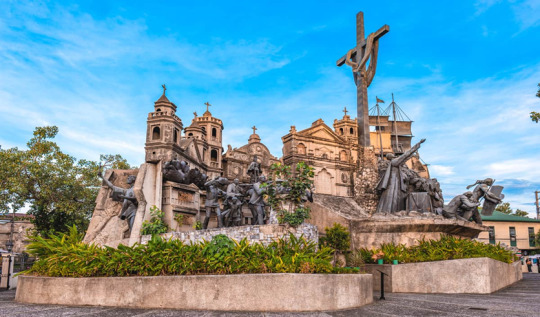
The Heritage of Cebu Monument is a striking landmark located in Cebu City's historic Parian district, depicting key moments and figures in Cebu’s rich history. Built from 1997 to 2000 under the direction of Cebuano artist Eduardo Castrillo, this monument is a detailed, multi-faceted sculpture crafted from concrete, bronze, brass, and steel. It serves as a historical tableau showcasing Cebu’s journey from pre-colonial times through the Spanish and American colonial periods, right up to modern times.
The monument features scenes that include Magellan’s arrival in Cebu, the baptism of Rajah Humabon and Queen Juana, and the Battle of Mactan where native chieftain Lapu-Lapu famously defeated Magellan. It also includes representations of significant structures such as the Basilica Minore del Santo Niño and the Cebu Metropolitan Cathedral, blending Cebu’s rich spiritual heritage with its cultural history.
The sculpting began in July 1997 and was completed in December 2000. The features of the monument include Christian conversions, Spanish occupation, battle against foreign colonizer, a prominent Christian figure, and a certain Philippine president.
PESCADOR ISLAND
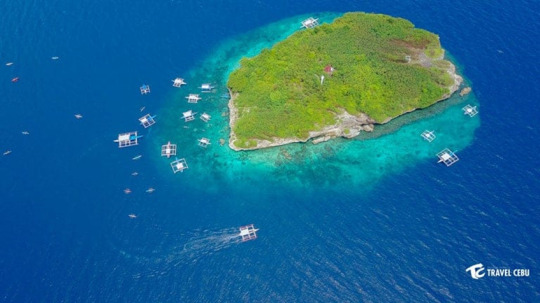
Pescador Island, located off the coast of Moalboal in Cebu, is a premier destination for diving and snorkeling enthusiasts. This small island is surrounded by vibrant coral reefs, crystal-clear waters, and an abundance of marine life, making it one of the best diving spots in the Philippines. Known for its dramatic underwater cliffs, the Pescador Cathedral, a large, cavernous area that divers can explore, is a particular highlight, offering an unforgettable underwater experience.
Another popular tourist attraction in this location is the Sardine Run. You can swim with millions of Sardines (also known as Herring), which is impressive. Therefore, brace yourself to experience the magnificent beauty of the underwater.
Reference: https://www.travelcebu.ph/blog/cebu-tourist-spots-guide/
3 notes
·
View notes
Text
Northwards To The Heritage City Of Vigan
#7 wonders#Architecture#Asia#Crisologo#Dancing fountains#Philippines#Spanish colonial#Travel journalist#Travel Photographer#UNESCO#Vigan
0 notes
Text

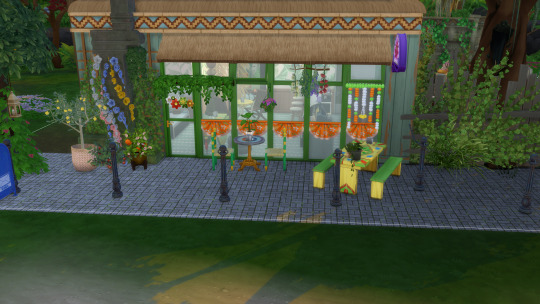
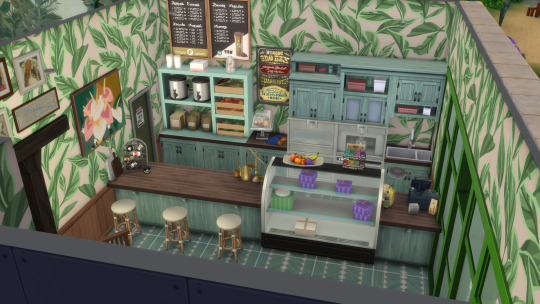
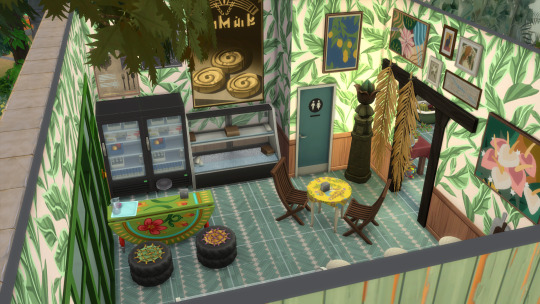
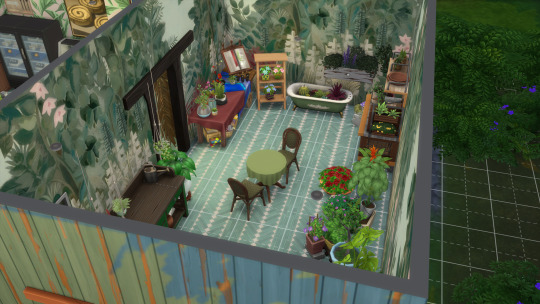
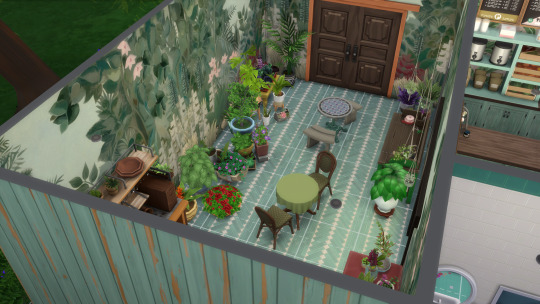
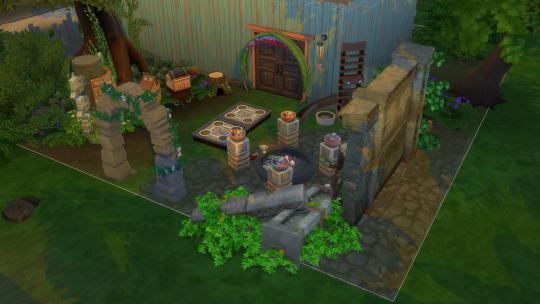
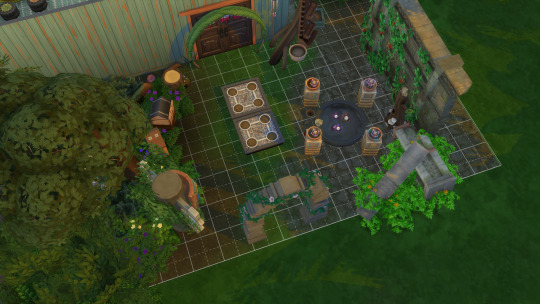
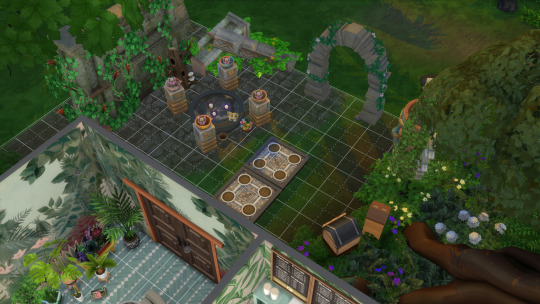
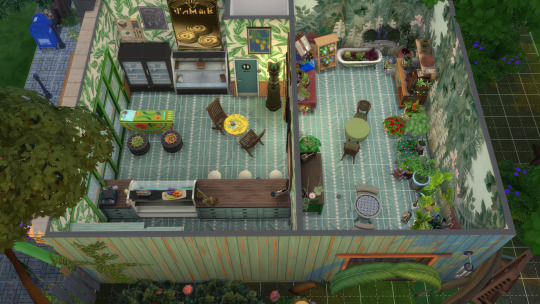
@herbalwarlock liked for a sims build [always accepting !]
okay but I really enjoyed this build ! I wanted to stay true to Raf's Filipino identity so I actually looked into pre-colonial architecture ad design, as well as maintain nods in the decoration itself.
my idea was a cafe / apothecary built on a spot of power, maybe an old temple dedicated to the Diwatas his clan gained their power from. in the back there's an altar kind of setup as well as growing plots. I took the lotus symbol and tried to carry it through to represent the magic; it's on the shop sign, there's a statue in the cafe, statues on the altar, and lotus candles in a few places.
I was also kinda riffing off the idea that maybe Raf does keep working as a lawyer but back in his mother's village the family has a small cafe / mercado kinda vibe ? (gotta pay the bills somehow, right ?) that his mother does work as a herbal witch out of. it's meant to a social, safe place. tbh I've always loved the lore and dynamic of the village witch / shaman, and it's found in so many cultures. but maybe when Raf is having a tough time or just needs a break he comes back to help out with the cafe.
I will admit that I got kinda, eh, tired near the end so some of the decorations aren't as thoughtful as I'd like. but I tried to maintain a bright color pattern that I was seeing in a lot of pictures, and tried to emulate Filipino culture in decor. I'll also say this was in part inspired by a lot of the shops I saw when I took a trip to Costa Rica; I know that isn't the same as the Philippines but I just. really appreciated that everything looked worn, not in a broken way but a well loved sort of way, and things were reused. when you have limited resource you have to make do with what you have, that kind of vibe.
anyway, I really did have a fun time with this build, definitely not an aesthetic I use often ! I hope you like it <3
#《 ° selkie.exe 》 oh im trash just not approved trash#° selkie does tumblr rp sims builds !#° okay to reblog !#° selkie plays games !
6 notes
·
View notes